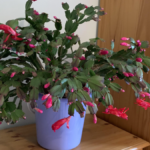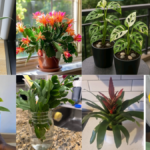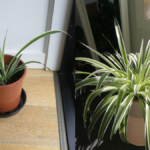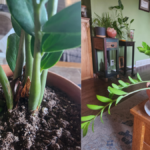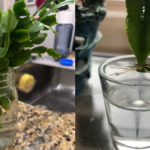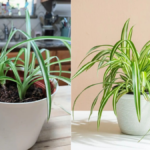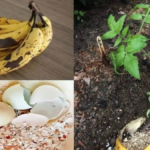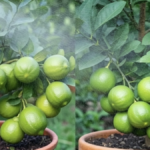Learn How to Take Care of Plants in Summer. expert summer plant care tips from my years of farming and gardening. Discover how to protect indoor and outdoor plants from heat, ensure proper watering, and keep them thriving all season long.
Table of Contents
How to Take Care of Plants in Summer
Summer is both a blessing and a challenge for plants. With my years of hands-on experience in farming and gardening, I’ve seen how scorching heat, dry soil, and intense sun can take a toll on plants. But over the years, I’ve also discovered what truly works to keep them healthy and flourishing. Whether you’re caring for houseplants or tending to a backyard garden, the right care can make all the difference. In this guide, I’ll share my personal tried-and-true summer plant care methods to help your green friends not just survive but thrive. Let’s dive in
Indoor Plant Care in Summer
Indoor plants may seem safe from the harsh summer heat, but they still need adjustments to their care routine. Here’s how I keep my houseplants happy during the hot months:
1. Watering Wisely
- I always water my indoor plants early in the morning or late in the evening when temperatures are cooler.
- The best way to check if your plant needs water is by sticking your finger about an inch deep into the soil. If it feels dry, it’s time to water.
- Be careful not to overwater—too much moisture can lead to root rot, especially in humid conditions.
- I always use room-temperature water to prevent shocking the roots.
2. Adjusting Light Exposure
- Some plants can’t handle direct summer sun, so I move sensitive ones away from windows where they might get burned.
- If a plant needs sunlight but not too much, I use sheer curtains or blinds to filter the intense light.
- I also rotate my plants weekly to ensure even growth and prevent them from leaning too much towards the light.
3. Increasing Humidity
- Summer heat can dry out indoor air, so I mist my plants lightly in the morning.
- Placing a water tray with pebbles under my plant pots helps maintain moisture.
- Grouping plants together is a simple trick I use to create a naturally more humid environment.
4. Ensuring Proper Ventilation
- Good airflow is essential to prevent fungal issues, so I keep a fan running or open windows occasionally.
- I also make sure not to place plants directly in the path of air conditioners or vents, as the dry air can damage them.
5. Fertilizing with Care
- During summer, plants grow faster, so I feed them with a balanced liquid fertilizer every 2-4 weeks.
- However, I always avoid excessive fertilization, as the heat can cause nutrient buildup, leading to plant stress.
Outdoor Plant Care in Summer
Outdoor plants face even tougher conditions, requiring extra attention to stay healthy in the summer heat. Here’s what I’ve learned works best:
1. Deep and Regular Watering
- Shallow watering doesn’t help much in summer—I always water deeply so that moisture reaches the roots.
- I prefer watering early in the morning or late in the evening to minimize evaporation.
- Drip irrigation or soaker hoses are a game-changer—they ensure efficient watering while reducing water waste.
- Adding mulch around plants helps retain moisture and keeps the soil cool, reducing the need for frequent watering.
2. Providing Shade and Sun Protection
- Some plants, especially leafy greens and flowers, can’t handle extreme heat. I use shade cloth, garden umbrellas, or plant covers to protect them.
- For potted plants, I move them to shaded areas during peak sun hours to prevent leaf burn.
- I also use taller plants or trellises to provide natural shade for smaller ones.
3. Soil Protection and Mulching
- A 2-3 inch layer of organic mulch (straw, wood chips, leaves) around plants keeps moisture in and the soil temperature stable.
- I avoid frequent tilling in summer because it disrupts root structures and dries out the soil too quickly.
4. Pest Control in Summer
- Pests like aphids, spider mites, and whiteflies thrive in warm weather, so I check my plants regularly.
- Neem oil and insecticidal soap work wonders for keeping pests away without harming beneficial insects.
- I also attract ladybugs and other beneficial insects to my garden to help control pest populations naturally.
5. Pruning and Maintenance
- Regular trimming of dead leaves and flowers encourages new growth and improves air circulation.
- Overgrown branches can cause overcrowding, so I prune them to keep plants healthy.
- I also watch for early signs of disease, like yellowing leaves or powdery mildew, to address issues before they spread.
6. Smart Fertilization
- I use organic compost or slow-release fertilizers to nourish my plants without stressing them.
- Fertilizing during extreme heat can burn plant roots, so I always do it early in the morning or after watering.
Bonus Tips for Summer Plant Care
1. Choose Heat-Tolerant Plants
Over the years, I’ve learned that some plants naturally handle summer heat better. If you live in a hot region, opt for plants like succulents, cacti, bougainvillea, lavender, or heat-loving vegetables like tomatoes and peppers.
2. Keep an Eye on Container Plants
Potted plants dry out much faster than in-ground plants. I check their soil daily and water them more frequently if needed.
3. Harvest Regularly
For those growing vegetables, frequent harvesting encourages more production and prevents plants from becoming over-stressed.
4. Monitor Weather Forecasts
I always stay updated on heatwaves and adjust my watering and shading strategies accordingly.
How often should I water my plants in summer?
Water deeply 2-3 times a week for outdoor plants. Indoor plants depend on soil dryness—check moisture before watering.
How do I protect plants from extreme heat?
Use mulch, shade cloth, and water early or late in the day. Move potted plants to shaded areas.
Can I fertilize plants in summer?
Yes, but use diluted fertilizers and avoid fertilizing during extreme heat to prevent root burn.
Final Thoughts
Taking care of plants in summer requires a balance of proper watering, shading, humidity control, and soil maintenance. With my years of gardening and farming experience, I’ve learned that small adjustments make a big difference in keeping plants healthy.
Whether you’re tending to indoor greenery or managing an outdoor garden, these tips will help keep your plants thriving during the hottest months of the year.
Read More Post
How to Take Care of an Avocado Plant – A Gardener’s Guide
How to Take Care of a Bat Plant (Tacca chantrieri) – Expert Guide 2025

